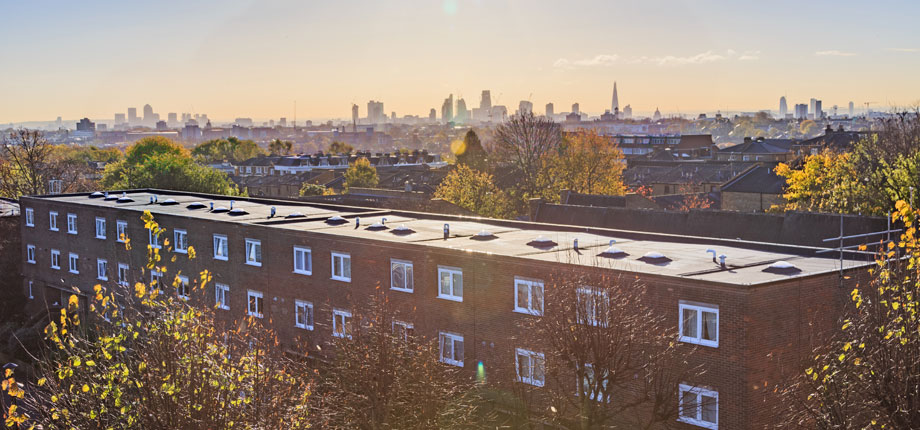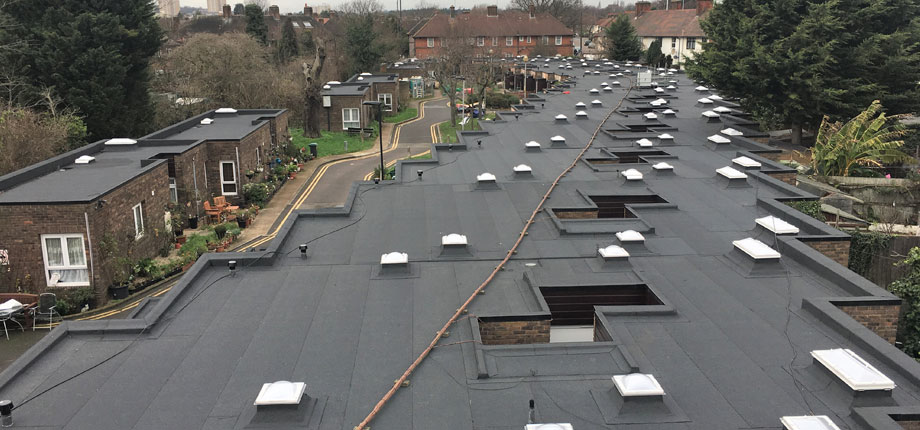Here, Daren Fraser at Langley Waterproofing Systems Ltd looks at the factors that decision makers of housing associations should consider before selecting a flat roof asset management partner.
Following the publication of the Independent Review of Building Regulations and Fire Safety, the Government has published its draft ‘Building Safety Bill’ (July:2020) incorporating elements of the review led by Dame Judith Hackitt.
“The Bill will introduce a new era of accountability, making it clear where the responsibility for managing safety risks lies throughout the design, construction and occupation of buildings in scope,” explained the Rt Hon Robert Jenrick MP Secretary of State for Housing, Communities and Local Government.
To highlight the importance of fire safety for low and high rise, multiple occupants and other dwellings in 2019/20, Government statistics demonstrate that Fire Rescue Services attended 72 fire incidents based on fire spread via the roof alone. Therefore, it is essential that a compliant flat roof system has been specified in line with the Building Regulations, helping to reduce the risk of external fire ignition and spread.

Condition data
A flat roof asset management partner’s first step is to understand the condition of the flat roof estate. A partner will carry out a roof condition survey which will be able to confirm whether any urgent remedial works are necessary, or conversely confirm no immediate works are needed. Data will be compiled to support an asset management plan; this will ensure a comprehensive programme is established where the roof estate is maintained and monitored. For roof areas that include potential fire safety risks and other concerns, these should be fully detailed and addressed as part of a flat roof refurbishment specification with a system solution that is compliant with current Building Regulations.
Understanding the Regulations
One of the key sources of guidance in England and Wales is Approved Document B (Fire Safety) of the Building Regulations and Section B4, which relates to roof coverings. This section is concerned with the resistance to the spread of fire from an external source, prevention of the spread of fire to adjacent buildings via thermal radiation, as well as the resistance to flame spread over the roof and/or fire penetration from external sources.
To prevent this, Approved Document B outlines boundaries and minimum distances and thereafter the required fire resistance of building materials, including roof coverings, based on the distances between buildings.
System Classification
A Broof(t4) classified system is referred to as ‘unrestricted’ or ‘low vulnerability’ and therefore has no minimum distance requirement between adjacent buildings. Anything less than a system that meets the Broof(t4) classification means that the building/s are more susceptible to fire risks.
System approach
The substitution of components within a system without the appropriate testing was among the key issues raised in the Hackitt Review. A factor to consider is that fire resistance classifications apply to the whole roof system, rather than individual components. This means that, if the system has only been tested and passed with a specific type and thickness of insulation, for example, it is dangerous to assume that that system will still perform as expected if the insulation type or thickness differs from that tested. This applies to any of the components that make up the system.
Independent certification
Independent certification will confirm the supplier’s system and its compliance alongside other performance data such as durability. For example, British Board of Agrément (BBA) certification will confirm compliance with the relevant Building Regulations including whether it has Broof(t4) classification. Other forms of independent verification include certification from an independent fire testing organisation.
Compliant installations
Flat roofing systems should only be installed by a contractor that is trained to do so. Often, leading system suppliers will have a database of approved contractors who are certified to install the system.

Decision makers should ensure they choose an asset management partner that collates data via roof condition surveys to allow proactive planning of refurbishment of roof areas as required, alongside specification collation, design and installation. This can effectively mitigate fire risks across the building estate and ensure peace of mind for decision makers that they are choosing a risk-free partnership with a single source of accountability.
Register and download the Broof(t4) Compliance: Fire Penetration Performance and Spread of Flame Whitepaper, supported and endorsed by Zurich Click here
Or, you can book Langley’s Mitigating Fire in Flat Roofing CPD webinar, delivered live with an opportunity for a Q&A session by clicking here
- Log in to post comments















